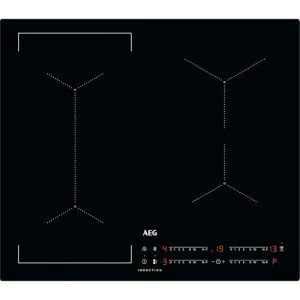The Three Greatest Moments In Induction Hob Maintenance History
Induction Hob Precautions: Ensuring Safety and Efficiency
Induction cooking has changed the culinary landscape by offering quicker cooking times, exact temperature level control, and an energy-efficient alternative to traditional methods. However, with these modern appliances come particular precautions that users must observe to guarantee safety and ideal performance. This post explores the various precautions to take when using an induction hob, aiming to supply users with the knowledge to improve their cooking experience while avoiding prospective mishaps.
Comprehending Induction Hobs
Before diving into precautions, it is important to comprehend what an induction hob is. Induction hobs utilize electro-magnetic fields to heat pots and pans directly while keeping the hob surface relatively cool. Induction Hob Benefits of cooking is not just energy-efficient however also enables rapid temperature adjustments, making it a favorite among home cooks and professional chefs alike.
Security Precautions When Using an Induction Hob
While induction hobs are generally safe, users must remain alert and follow best practices. Here are some safety precautions to think about:
1. Proper Cookware Selection
Induction hobs work only with ferrous (magnetic) cookware. Here are the types of pots and pans appropriate for induction cooking:
- Cast Iron: Excellent heat retention and distribution.
- Stainless Steel: Heavy-bottomed options typically work well.
- Carbon Steel: Similar advantages to cast iron, with lighter weight.
The following pots and pans materials are not ideal for induction:
- Glass pots and pans
- Aluminum cookware (unless it has a magnetic base)
- Copper cookware
2. Keeping the Cooking Surface Clean
To maintain an effective induction hob, it is crucial to keep the cooking surface tidy:
- Wipe spills right away to prevent them from baking onto the surface area.
- Use moderate, non-abrasive cleaners to prevent scratching the glass surface.
- Prevent cleaning up the hob while it's hot to prevent burns.
3. Ventilation
Although induction cooking produces less heat, ensuring that the kitchen area is well-ventilated is critical:
- Open windows or use exhaust fans to distribute steam and odors.
- Keep airflow to avoid overheating the appliance.
4. Prevent Blocking Ventilation Vents
The majority of induction hobs feature ventilation systems. It's vital not to obstruct these vents throughout operation:
- Ensure there's at least a few inches of space around the hob.
- Prevent putting things on top of or around the hob that might obstruct airflow.
Electrical Precautions
Dealing with electrical devices needs particular precautions to ensure user safety. Here are some tips to think about:
- Check Wiring: Ensure that the induction hob's outlet can handle its power requirements. Many hobs require a dedicated circuit.
- Avoid Water: Keep the hob and the surrounding area dry to avoid electrical shocks.
- Disconnect when not in use: If the induction hob is portable, unplug it after each usage to reduce threat.
Utilizing the Right Settings
Induction hobs come geared up with different settings, and understanding how to use them can prevent cooking accidents:
- Temperature Control: Familiarize yourself with the temperature settings to prevent overheating pots and pans.
- Timer Function: Utilize the timer feature to avoid overcooking or burning food.
- Automatic Shut-off: Many models include automatic shut-off features; however, it's essential not to rely entirely on this function.
FAQs
What types of cookware will not deal with an induction hob?
Pots and pans made from non-magnetic materials like glass, aluminum, and copper (unless specially created with a magnetic base) will not warm on induction hobs.
Can I use my existing cookware on an induction hob?
You can check if your existing cookware is induction-compatible by performing the magnet test; if a magnet sticks to the bottom, it can be used on an induction hob.
Are induction hobs safe for kids?
While induction hobs are much safer than gas or electrical choices in terms of surface area heat, it's still advisable to supervise children around the cooking area and educate them on the significance of kitchen area security.
Is it necessary to have a special cooling system for an induction hob?
The majority of modern induction hobs have built-in cooling systems that suffice for regular usage. Nevertheless, ensure that ventilation and air flow are not blocked.
Induction cooking offers a blend of innovation and safety, making it a preferred choice for lots of homes. Understanding and sticking to correct precautions can boost the effectiveness and life expectancy of an induction hob while making sure a safe cooking environment. By following the standards detailed in this post— such as selecting the right cookware, preserving tidiness, guaranteeing correct electrical precautions, and using the proper settings— users can delight in the benefits of induction cooking with assurance.
With correct care and adherence to safety procedures, induction hobs can act as a great and effective tool in the modern kitchen.
